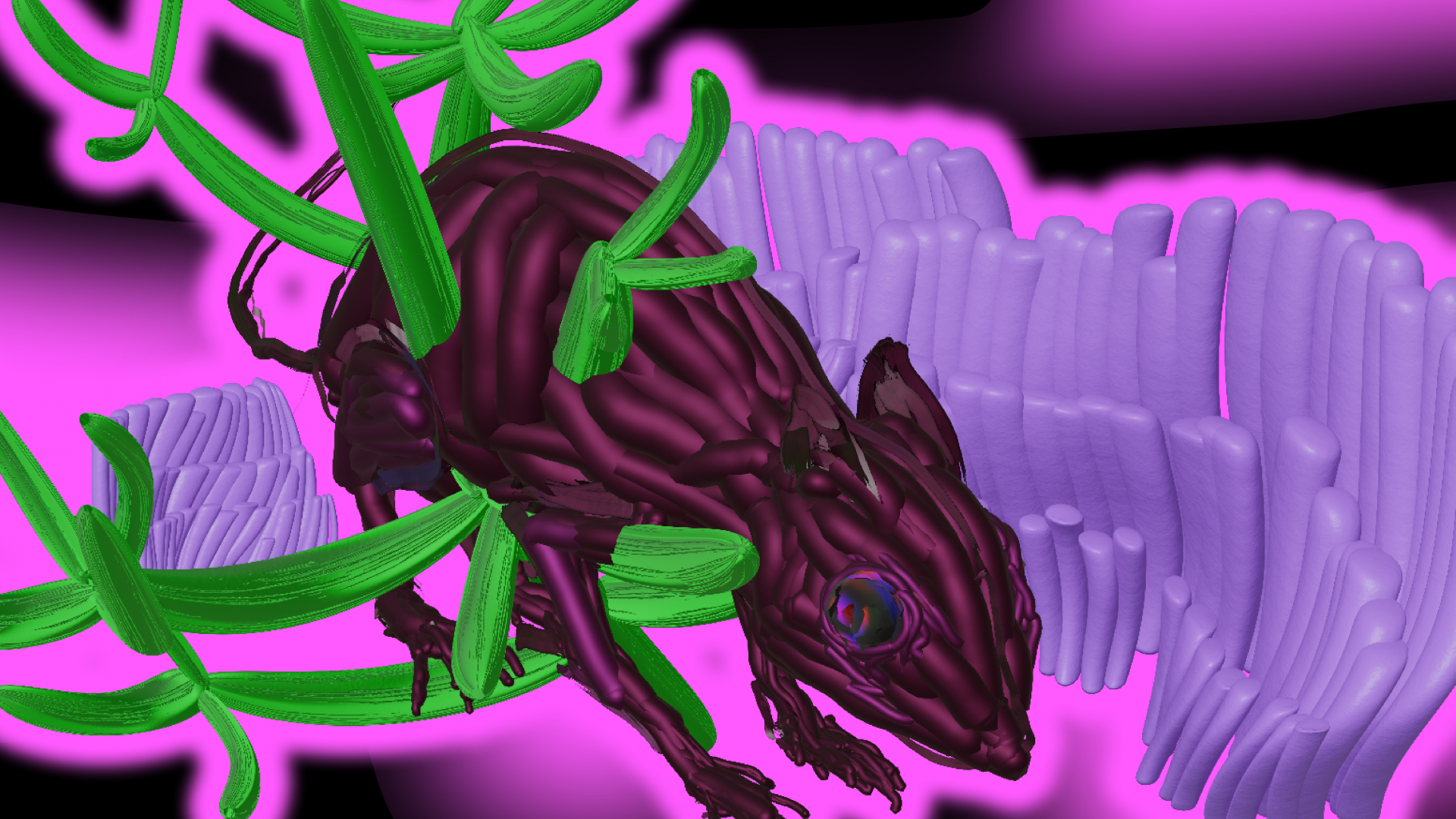Exhibition at ACUD Galerie:
15.5. - 25.6.
Thursday till Sunday
Opening hours: 14h - 19h
Sinzo Aanza shows "A Sketch of the City for Manzambi IIII"; a series of 4 photomontages created during Laboratoire Kontempo 2020: Four major intersections in Kinshasa, urban utopias by Bodys Isek Kingelez and robots that facilitate the daily lives of the inhabitants:inside.
In the multimedia installation "The History of Memory", Koko Kabamba explores various forms of memory culture in digital and analogue space and their changes over time.
With the fanzine "La voix du congolais", Jean Kamba caricatures the eponymous newspaper of the Congolese elite from the colonial era, which was also called the class of the "évolués (the developed)".
Billy Ngalamulume aka Kill Bill shows the video documentary of his performance "Bilobela TV Lokuta FM", a critical examination of the often clichéd representation of his art in the international media.
The GIF "Fight the System" by Rachel Nyangombe questions power structures in the contemporary art system. By using the popular format GIF, the work becomes accessible, can be reproduced at will and distributed via smartphones.
The work "Untitled (What a Crypton)" by Gabriella Torres-Ferrer is a multimedia installation consisting of plantains and microcomputers that display real-time data on cryptocurrencies and decentralised technologies. The living sculpture is part of her ongoing series Mine Your Own Business, which explores the digital environment as part of a continuum of capitalist-colonial entanglements.
The video "The Sceptical Chemist (2018)" by Raul Walch was shot in Almeria, Spain. This area is known for its immense agricultural vegetable production for the European market and poor working conditions based on the exploitation of mostly migrant workers. Dressed in a white protective suit, common in the agricultural industry, the artist embodies the worker, the viewer and the chemist.
Outside the gallery you will find an installation Taxi Radio by Radio Kinzonzi: ‘I consider the taxi as a space of encounter.’ - Mega Mingiedi in Taxi Radio.
Ausstellungseröffnung Laboratoire Kontempo II
In der Galerie werden Videos, multimedia-Installationen und digitale Collagen präsentiert.
Sinzo Aanza zeigt „Eine Skizze der Stadt für Manzambi"; eine Serie aus 4 Photomontagen, die während des Laboratoire Kontempo 2020 entstanden sind: Vier große Kreuzungen in Kinshasa, urbane Utopien von Bodys Isek Kingelez und Robotern, die das Alltagsleben der Bewohner:innen erleichtern.
Koko Kabamba erforscht in der Multimedia-Installation „Die Geschichte des Erinnerns“ verschiedene Formen der Erinnerungskultur im Digitalen und Analogen Raum und deren Veränderungen im Laufe der Zeit.
Mit dem Fanzine "La voix du congolais" karikiert Jean Kamba die gleichnamige Zeitung der kongolesischen Elite aus der Kolonialzeit, die auch als Klasse der "évolués (der Entwickelten)" bezeichnet wurde.
Billy Ngalamulume alias Kill Bill zeigt die Video-Dokumentation seiner Performance „Bilobela TV Lokuta FM“, eine kritische Auseinandersetzung mit der oft klischeehaften Repräsentation seiner Kunst in den internationalen Medien.
Das GIF „Fight the System“ von Rachel Nyangombe hinterfragt Machtstrukturen im Zeitgenössischen Kunstsystem. Durch die Verwendung des populären Format GIF wird die Arbeit zugänglich, kann beliebig vervielfältigt werden und über Smartphones verbreitet werden.
Die Arbeit „Untitled (What a Crypton)“ von Gabriella Torres-Ferrer ist eine Multimedia-Installation bestehend aus Kochbananen und Mikrocomputern, die Echtzeitdaten zu Kryptowährungen und dezentralen Technologien anzeigen. Die lebende Skulptur ist Teil ihrer fortlaufenden Serie Mine Your Own Business, die das digitale Umfeld als Teil eines Kontinuums kapitalistisch-kolonialer Verstrickungen erforscht.
Das Video „The Sceptical Chemist (2018)“ von Raul Walch wurde in Almeria, Spanien, gedreht. Dieses Gebiet ist bekannt für seine immense landwirtschaftliche Gemüseproduktion für den europäischen Markt und den schlechten Arbeitsbedingungen, die auf der Ausbeutung zumeist migrantischer Arbeiter basieren. Bekleidet mit einem weißen Schutzanzug, wie er in der Agrarindustrie üblich ist, verkörpert der Künstler den Arbeiter, den Betrachter und den Chemiker.
